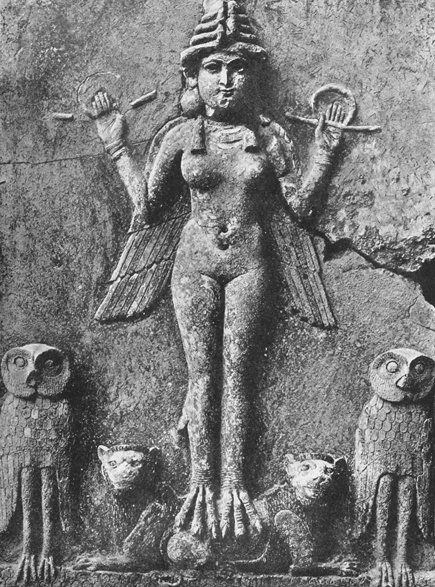Image Details

From The Great Mother
Lilith? In the 1930s, scholars identified the voluptuous woman on this terracotta plaque (called the Burney Relief) as the Babylonian demoness Lilith. Today, the figure is generally identified as the goddess of love and war, known as Inanna to the Sumerians and Ishtar to the later Akkadians. (Both characters are featured in the poem Gilgamesh and the Huluppu-Tree, quoted on this page.) The woman wears a horned crown and has the wings and feet of a bird. She is flanked by owls (associated with Lilith) and stands on the backs of two lions (symbols of Inanna).
According to Mesopotamian myths, the demoness Lilith (
Molded plaques depicting gods were popular in Mesopotamia from about 2000 to 1600 B.C.E. Found in temples and houses, they may have served as votive offerings or devotional objects. The current location of the Burney Relief is unknown.
